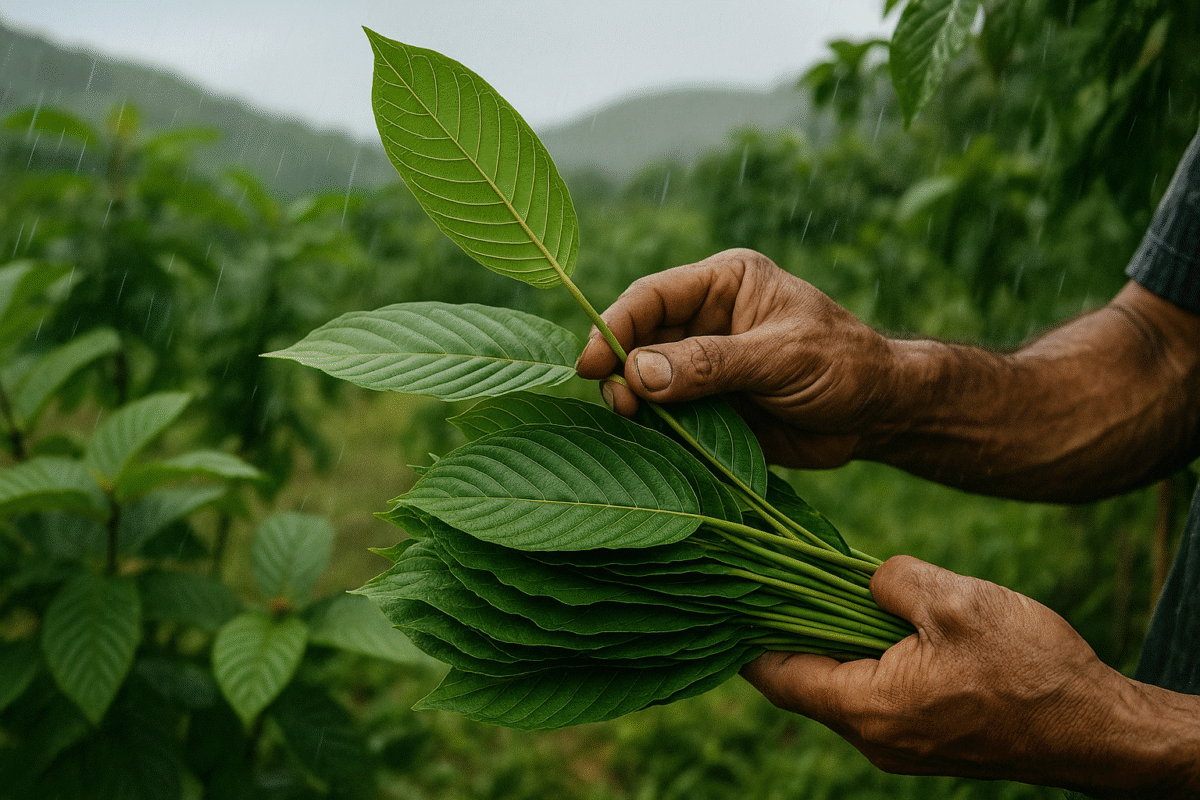Farmers rush immature kratom harvests due to demand, while rainy season and regulatory shifts threaten quality.
Kratom Quality Under Pressure: Harvesting, Climate, and Regulatory Challenges — and Nusa Botanicals’ Response
1. Rising Demand and the Temptation of Speed
As kratom extract gains popularity, demand for raw biomass has surged and shipping containers move weekly. This creates a stark choice for farmers: harvest immature leaves to meet fast-moving orders, or adhere to traditional practices that wait the extra 2–3 weeks for maturity and optimal alkaloid levels. Most choose speed over quality; faster money wins, even if the product suffers.

2. Rainy Season: A Natural Threat to Quality
Compounding this pressure is the upcoming rainy season. Unlike the dry season, where leaves air-dry in mere hours under hot sun—preserving alkaloids and color—rain forces drying to stretch over 2–4 days. The prolonged moisture can lead to partial fermentation, oxidative degradation, and notable reductions in alkaloid potency and leaf quality.
Scientific studies support this: kratom grown in wet seasons shows notably lower alkaloid content, particularly mitragynine, due to nutrient leaching and reduced sunlight exposure. Furthermore, oxidation during slower drying also diminishes potency.
3. Regulatory Shifts Provide a Glimmer of Hope
On the regulatory front, recent developments offer some relief. At the federal level, in July 2025, the FDA formally recommended classifying 7‑hydroxymitragynine (7‑OH)—a potent kratom extract—as a Schedule I controlled substance, aiming to curb its prevalence in unregulated products.
At state level, Florida enacted an emergency rule on August 13, 2025, placing 7‑OH into Schedule I—effectively banning it there. Texas, meanwhile, already prohibits the sale of synthetic or overly concentrated 7‑OH in kratom products (over 2% by alkaloid content), under Senate Bill 497 (2023), along with labeling and age‑restriction requirements. A stricter proposal, Senate Bill 1868, which would further regulate kratom (including age, location restrictions, packaging, etc.), is still under review.
These moves can reduce pressure to cultivate the high-yield, low-quality biomass demanded for 7-OH production—though consumer demand might shift to other extracts like mitragynine, potentially preserving biomass pressure.
4. Nusa Botanicals: Preserving Quality Through Partnership and Control
At Nusa Botanicals, we’ve taken a proactive stance:
- We’ve built strong, trust-based relationships with select farmers. Through welfare investments, we’ve fostered loyalty—ensuring they prioritize quality over rapid volume.
- Our supply chain and quality control systems span from farm to packing. By monitoring every stage: harvest timing, drying conditions and processing, we safeguard high standards, even through rainy seasons and fluctuating market demand.
Contact Us for more information And Bulk Order or Visit Our Store to see our available Strains.
We are able to ship directly from our warehouses in USA and Europe, or if you’d like to order larger quantity, we have the option to ship directly from Indonesian, Air and Sea shipments available.
Takeaways:
- Demand for kratom extract is driving fast, immature harvesting, risking potency and consistency.
- Rainy season amplifies these issues through slower drying and alkaloid loss.
- Regulatory actions—federal and state bans on 7-OH—might ease pressure on biomass harvest quality.
- Nusa Botanicals remains committed to quality via strategic farmer partnerships and rigorous supply-chain oversight.

